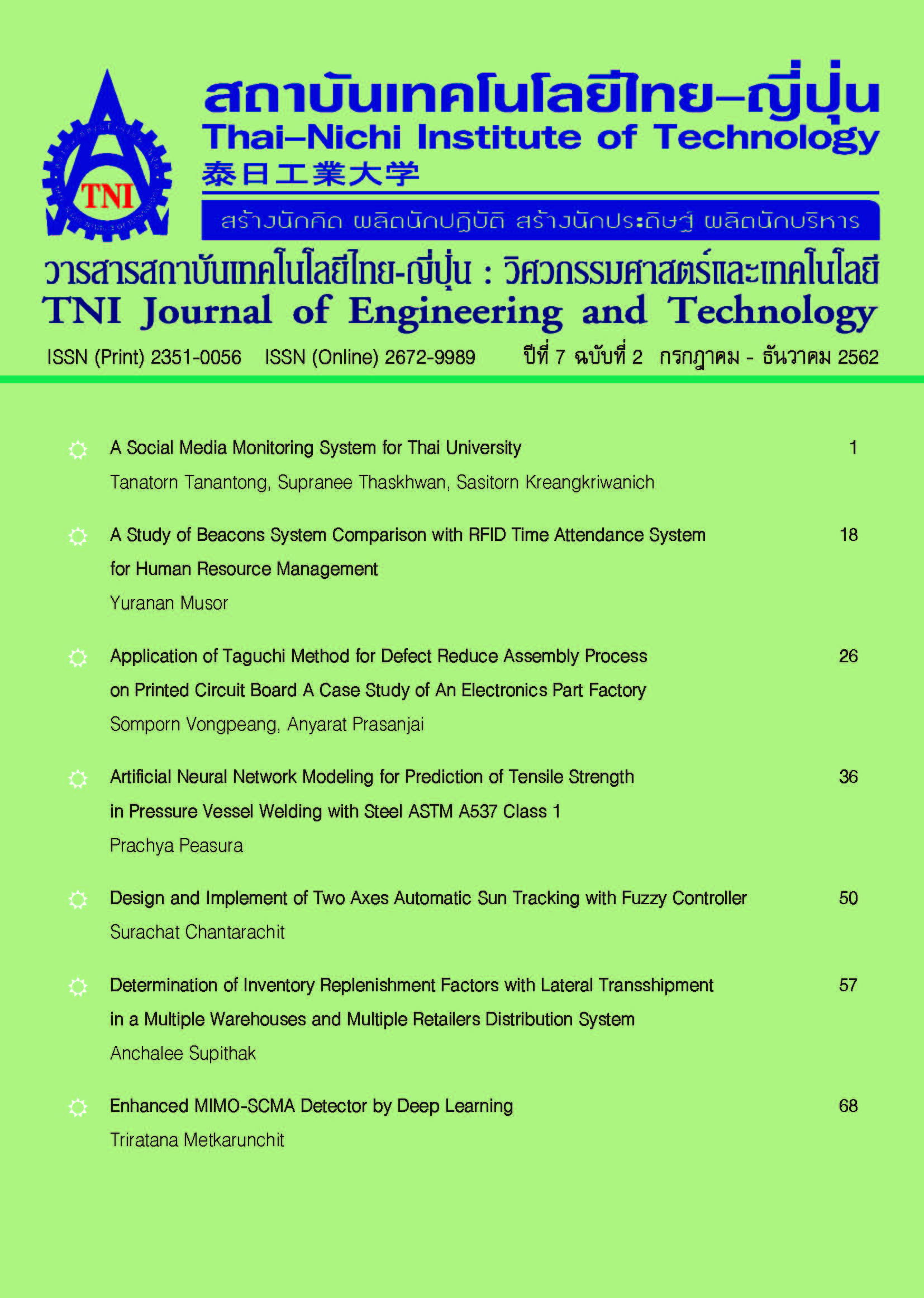SARIMA Models Applications for Demand Forecasting and Supply Planning of Natural Rubber in Thailand
Main Article Content
Abstract
Rubber is the important economic crops and export products of Thailand. Studying and forecasting the demand of rubber could be used as information for supply planning including production and cultivate area. Time series analysis was used to formulate the forecasting model for export volume of Concentrated Latex, RSS Grade 1, and Crepe Rubber. The appropriate forecasting time series models were
and
, respectively. After that historical statistics of production and stock were used to estimated rubber production and cultivate area corresponding to forecast including domestic demand and export. In the year 2022, Thailand should produce rubber about 1.573 million tons, which requiring cultivate area is about 6.561 million rai, respectively. The research results could be used to plan and set the appropriate policy for Thai rubber production. Consequently, Thailand should reduce the rubber plantation area by 12.659 million rai and then promote the planting of other economic crops. This is to achieve a balance between demand and supply.
Article Details
Article Accepting Policy
The editorial board of Thai-Nichi Institute of Technology is pleased to receive articles from lecturers and experts in the fields of engineering and technology written in Thai or English. The academic work submitted for publication must not be published in any other publication before and must not be under consideration of other journal submissions. Therefore, those interested in participating in the dissemination of work and knowledge can submit their article to the editorial board for further submission to the screening committee to consider publishing in the journal. The articles that can be published include solely research articles. Interested persons can prepare their articles by reviewing recommendations for article authors.
Copyright infringement is solely the responsibility of the author(s) of the article. Articles that have been published must be screened and reviewed for quality from qualified experts approved by the editorial board.
The text that appears within each article published in this research journal is a personal opinion of each author, nothing related to Thai-Nichi Institute of Technology, and other faculty members in the institution in any way. Responsibilities and accuracy for the content of each article are owned by each author. If there is any mistake, each author will be responsible for his/her own article(s).
The editorial board reserves the right not to bring any content, views or comments of articles in the Journal of Thai-Nichi Institute of Technology to publish before receiving permission from the authorized author(s) in writing. The published work is the copyright of the Journal of Thai-Nichi Institute of Technology.
References
[2] Domestic Economy, " Agricultural Products Exports in 2017, Rice-Rubber in the World Market," (In Thai). Prachachat Business Newspaper, Vol. 39, No.4904 pp. 3, Monday 9 - Wednesday 11 January 2017.
[3] Mookda Manmin, Time Series and Forecasting, (In Thai). Bangkok: Prakaipruek Publishing, 2006.
[4] G. E. P. Box, et al., Time Series Analysis: Forecasting and Control, 3rd ed. New Jersey: Prentice Hall, Englewood Cliffs, 1994.
[5] Songsiri Taesombat, “Quantitative Forecasting,” (In Thai). Bangkok: Kasetsart University Press, 2006.
[6] R. Fildes and S. Makridakis, "The Impact of Empirical Accuracy Studies on Time Series Analysis and Forecasting, International Statistical Review, Vol. 63 No. 3, pp. 289-308, 1995.
[7] H. Charles C, "Forecasting Seasonals and Trends by Exponentially Weighted Moving Averages," International Journal of Forecasting, Vol. 20, No. 1 pp. 5-10, Jan-Mar 2004.
[8] Chalermpon Jatuporn and Patana Sukprasert, "Forecasting Models for Rubber Production and Export Quantity of Thailand," (In Thai). Khon Kaen Agriculture Journal, Vol. 44, No. 2, pp. 219-228, 2016.
[9] Pennapa Putzon, "The Forecast of Export Quantity of the Rubber Ribbed Smoked Sheets 1 by Box-Jenkins Method,"
(In Thai). B.Sc. Statistics. Burapha Universiry., Chon Buri, Thailand, 2013.
[10] Warangkhana Keerativibool, "Forecasting the Export Quantity of the Rubber Compound," (In Thai). SWU Science Journal, Vol. 30, No. 2, pp. 41-56, 2014.
[11] The Customs Department. Import-Export Statistics. (In Thai). [Online]. Available: https://www.customs.go.th/statistic_report.php?tab=by_tariff_classification. [accessed Oct 25, 2017]
[12] Office of Agricultural Economics.Situation and Trend of Important Agricultural Products in 2018. (In Thai). [Online]. Available: https://www.oae.go.th/oaenew/OAE/. [accessed Jan 19, 2017].
[13] C.D. Lewis, International and Business Forecasting Methods. London: Butterworth Scientific, 1982.


